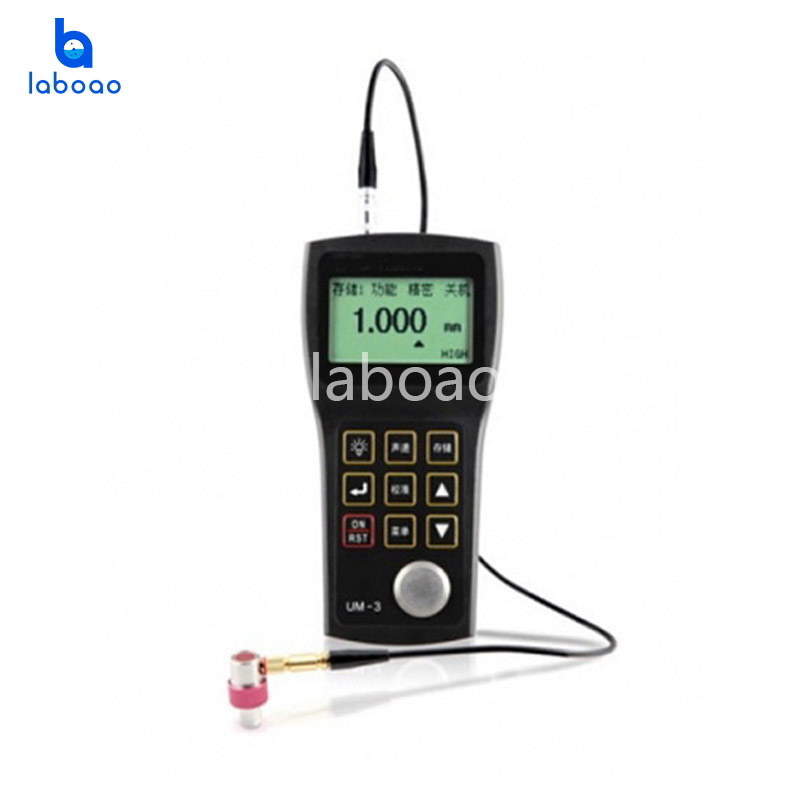The ultrasonic thickness gauge is mainly composed of the host and the probe. The host circuit includes three parts: the transmitting circuit, the receiving circuit, and the counting display circuit. The high-voltage shock wave generated by the transmitting circuit excites the probe to generate ultrasonic transmitting pulse waves, which are reflected by the medium interface and then received by the receiving circuit. It is mainly based on the propagation speed of the sound wave in the sample multiplied by half of the time passing through the sample to obtain the thickness of the sample.
Ultrasonic thickness gauge measure thickness based on the principle of ultrasonic pulse reflection. When the ultrasonic pulse emitted by the probe passes through the measured object and reaches the material interface, the pulse is reflected back to the probe. The thickness of the material being measured is determined by precisely measuring the time the ultrasonic wave travels through the material. This principle can be used to measure all kinds of materials that can make ultrasonic waves propagate inside them at a constant speed.
Due to the convenience of ultrasonic processing and good directivity, ultrasonic technology measures the thickness of metal and non-metallic materials, which is fast, accurate, and pollution-free, especially in the case where only one side can be touched, which can show its superiority. Ultrasonic thickness gauges are widely used in various plate and pipe wall thicknesses, boiler vessel wall thicknesses and their local corrosion and rust conditions. Therefore, product inspection of metallurgy, shipbuilding, machinery, chemical industry, electric power, atomic energy and other industrial sectors plays a major role in the safe operation of equipment and modern management.
Ultrasonic waves will be rapidly attenuated when they encounter air. In order to discharge the air between the ultrasonic probe and the work piece, ultrasonic couplants are often used to remove them. Usually, the smooth surface of the workpiece can be measured in the factory with general oil or other non-corrosive liquid, and the rough surface can be used with relatively viscous butter. After the measurement, the surface of the probe and the surface of the standard block must be wiped off. When repeating the measurement at the same point, move the probe more than 10cm away each time, and then measure it after a few seconds interval, so as to avoid the next measurement result being affected by the magnetization of the tested material due to the probe.

